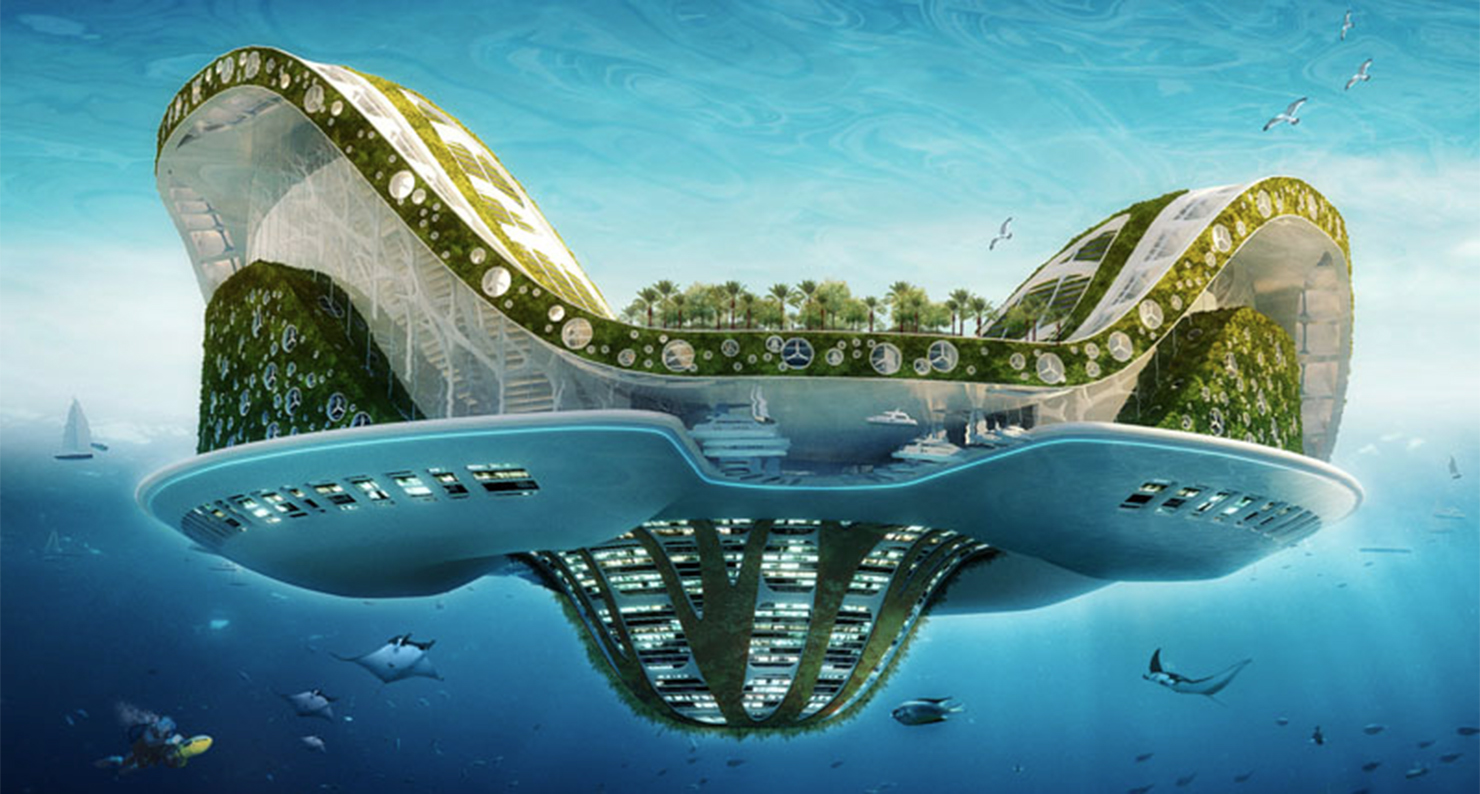
Rendering of Vincent Callebaut’s Lilypad project, 2008.
Floating cities have long been capitals for the utopian imagination. Cities seem to spring from the earth as self-contained systems, independent organisms practically begging to be detached from their earthly roots. The idea of a completely isolated, moveable city has proved a fertile inspiration for architects, artists, and activists throughout history.
Some of our most famous watery cities were not, strictly speaking, actually floating: Venice and Tenóchtitlan were perched on islands and traversed by boat. Since the time of the Incas, the Uros tribe of Lake Titicaca in Peru have built their villages on floating masses of reeds, anchored to the lake bottom and steered with long poles to evade would-be attackers. In a modern incarnation, an estimated 25,000 people have colonized the surface of a lake near Lagos, Nigeria with shacks on rafts or stilts, creating the notorious Makoko slum.
These examples emerged organically, but planned floating cities are enjoying a renaissance as a solution to environmental problems of pollution and dwindling resources. The City issue of LQ features three radical plans for floating cities, none of which were built, but all of which intended to address problems of overcrowding and consumption—Buckminster Fuller’s Tetrahedron City; Kisho Kurokawa's 1961 floating city on a river; and Vincent Callebaut’s Lilypads (above, floating next to Monaco), built to house refugees from climate change whose own cities had succumbed to rising sea levels.
Other experimental designs include floating cities actually made from trash. A Dutch architecture firm recently put forward a plan to turn a mass of 100 million tons of plastic that has accumulated in the Pacific into a habitable city of 500,000, with a functioning economy based on algae-farming. The firm notes that Recycled Island is located in a beautiful ocean area northeast of Hawaii, but “because of the floating character, the position could eventually be altered.”
Meanwhile, the “seasteading” movement has been motivated by libertarian political sentiments. Viewing the sea as the last frontier available for experimentation with small-government societies, they hope to strike out into the Pacific on autonomous self-contained vessels as early as 2012. As the libertarian Reason magazine asked, “Is floating the last, best hope for liberty?”
In fiction, of course, the sky’s the limit—cities that float in the air as well as the water. In Gulliver’s Travels, Jonathan Swift imagined a civilization on the island of Laputa, propelled through the air by mysterious magnetic properties. Doctor Doolittle became king and chief city-planner on the floating island of Spidermonkey in Hugh Lofting’s The Voyages of Doctor Doolittle. Spaceships on the scale of cities populate sci-fi, such as Star Wars’ Cloud City.
A floating city, in its total disconnect from both humanity and nature as we know them, is inherently both dystopian and utopian. After all, the archetypal floating city might be Noah’s Ark, built as an escape from disaster and in hopes of a fresh start.